
New Zealand Travel Tips
How we got to New Zealand from Chile (on our all around the world trip)
After more than 14.500 km self-driving in South America and an overnight flight of 13 hours from Santiago de Chile we arrived on 19th October in New Zealand. In the light of the very pleasant flight with a really good service we can recommend flying with LATAM on this direct connection. Due to passing the International Date Line we almost lost the complete day of 18th October 2016. Above all 13 hours sounds a lot but compared to when flying from our home country Germany to New Zealand it was rather a short flight. Read on and discover the top travel tips for New Zealand by campervan.
Our route through New Zealand
North Island
Arriving in Auckland, we directly picked up our Apollo campervan at the station. Consequently, we started in the North Island of New Zealand (Auckland) and took a ferry to the South Island. During our trip we have heard that this is the favorable direction (from North to South). Consequently, picking up the campervan in the South and returning in the North is cheaper in general. 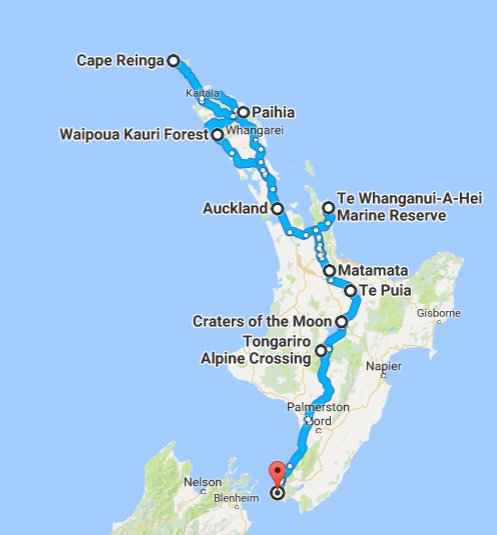
South Island
 In total, we drove around 4,850 km in New Zealand with our big vehicle. It’s not really a big issue due to the mainly empty roads. In addition, we have only seen one tourist driving on the wrong side of the road.
In total, we drove around 4,850 km in New Zealand with our big vehicle. It’s not really a big issue due to the mainly empty roads. In addition, we have only seen one tourist driving on the wrong side of the road.
Our experience of self-driving in New Zealand
For New Zealand we decided to do the standard was of exploring the country: in a campervan. Consequently, the campervan was our new home for the upcoming three weeks. In New Zealand we had a quite comfortable campervan whereas campervan to the old campervan we received in Australia. Above all, the campervan was completely equipped with a kitchen, little “bathroom” incl. shower and a combined eating / sleeping room.
With 7 meters length, 3m height and as wide as the street lanes we are feeling like bus drivers. And in addition, we had to check all doors and lockers are closed like before the start of an airplane. We were lucky since the campervan was newly converted from a normal sprinter van to a campervan. For New Zealand it must be remembered that filling up the fuel is a kind of lottery. Within some kilometres we observed the price ranges from 99 cents to 1.5 NZ dollars for diesel.
Freedom camping
In New Zealand, freedom camping is allowed everywhere where it is not explicitly prohibited. Consequently, there is no need to stay on organized camping sites. However, to have power and electricity in the evenings, you have to drive daily hundreds of kilometres to charge the motorhome battery. The battery is used for the interior facilities like lights, cooking and also shower. Once when we stayed some days in Wellington, we unfortunately ran out of battery what resulted in a dark evening in our “home”. Good as long as the batteries of the kindle and iPad are charged to read and plan the next days. 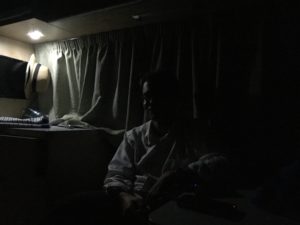 Every morning in New Zealand we start with an ABBA song into the day (no, we are no big ABBA fans). But only due to a bug of our car since it starts every morning with the music beginning with A on our USB stick and not at the point where we stopped the day before.
Every morning in New Zealand we start with an ABBA song into the day (no, we are no big ABBA fans). But only due to a bug of our car since it starts every morning with the music beginning with A on our USB stick and not at the point where we stopped the day before.
Ultimate travel tips for New Zealand
When thinking of New Zealand you might of course think of beautiful, extraordinary and colorful landscapes. And definitively, this is really true. We have not really met any person not wishing to go to New Zealand. In conclusion, it will be due to the nature. The landscape is uniquely amazing with intensive colors – extremely bright green grass, light blue sky and always turquoise colored water.
In particular, we stopped with our campervan to cook or to overnight just in one of the many bays and enjoy the awesome and unbelievable panorama. In contrast the roads on the South Island are more twisting compared to the North Island. But driving through the landscape is even more impressive. We were already deeply impressed from the landscape in the North.
Cape Reinga (North Island)
Starting at the East bays of the North Island near Auckland, Cape Reinga in the far North was our first destination. You can reach Cape Reinga after approx. 90 km from Kaitaia. Cape Reinga with its light house is almost the most northern point of New Zealand. There is only one other bay which is a bit longer than this point but all over this is not accessible. Moreover, the Tasman Sea and the Pacific Ocean meet each other at this point. As a result, waves of up to ten meters can arise (but not at the time we were).
Waipoua Kauri tree forest (North Island)
On our way from the Cape Reinga to Auckland, we stopped in Waipoua to grasp a view on these impressive trees. This forest with typical Kauri trees lies on the West coast of New Zealand. Maori used kauri timber for boat building, carving and building houses. These trees can be up to 50 meters high and have tree trunks of an extent of more than 10 meters. Especially, Waipoua is home to Tane Mahuta, king of the forest and the largest remaining kauri tree in the country. The indeed 1,500 year old Tane Mahuta is 51.5 m tall, with a girth of 13.77 m.
Auckland (North Island)
Auckland is not the capital of New Zealand but the biggest city in New Zealand. In addition, Auckland is the one with the most different cultures including a high portion of Polynesian people. We have especially experienced this by the many different food restaurants especially Asian ones. Therefore, it was a good destination for the pleasure anticipation for our upcoming destinations on the all around the world trip. Auckland is dominated by volcanos (50 indeed) and the streets were previously lava routes.
Besides some modern buildings and skyscrapers in some areas old Victorian houses can be found. Based on studies Auckland is the city with the highest living quality. We can recommend walking around in the city center and enjoying the area around the harbor.
Kawakawa – Hundertwasser Toilets (North Island)
All above, we only stopped in Kawakawa to visit the toilet from Hundertwasser. Hundertwasser lived near this town since 1973 until his dead in 2000. Provided that this toilet is built in the typical style of Hundertwasser with its typical colorful tiles, glasses and bottles as well as wavy lines. Consequently, it is worth to hold on until you reach Kawakawa…
Geothermic area in New Zealand (North Island)
The central part of the Northern Island is famous for its geothermal activity. Obviously, the minerals in the earth together with the high temperature create fascinating colors of the landscape. We swear these pictures are not photoshopped!!
Tongariro National Park (North Island) – UNESCO World Heritage
We would like to show you some pictures of the Tongariro National Park. The National park with its 797 sq km includes three volcanoes that are responsible for the hot springs, craters and boiling mud pools. Of course that this UNESCO World Heritage was on our planned route. However, despite of having been there, we were not able to get out of the campervan and to visit the National park due to heavy and long-lasting rain showers. Despite trying it several times during short rain breaks we had to return after some meters and were not able to visit the National Park. 
Wellington – the windy city (North Island)
Wellington with its around 190,000 people is the capital of New Zealand. Comparatively twice as much people are living in Auckland. The capital is also called Windy Welly due to the strong winds almost every day. However, Wellington itself is very nice with a big harbor and old houses at the hills in and around the city. Very popular is the parliament that looks like a bee hive. Not as old as in Valparaiso in Chile but also a cable train is running up a hill to a botanic garden with a very good lookout on the city.
But there is also a way through the gardens to walk up the hill – what we have done at least for going down. In addition, we can recommend the Cuba Street District as a nice area for the evening. We enjoyed in the bar called Fidel’s a really tasteful Snickers Milkshake. Moreover, the vintage shops along the Cuba Street makes it to a nice area to walk around.
Cape Palliser (North Island)
Our last sight on the North Island is Cape Palliser as one of the most Southern points. In short, we can highly recommend this area. Especially the many seals we have seen there are really a special experience. Moreover, the drive from Wellington lasts only around one hour and is very scenic. This region is only sparely populated but the landscape is amazing with the light green grass field, clear blue sea, black beaches and the rocky mountains on the other side.
Walking the last miles to the light house and the 240 steps up to the platform was hard fighting the heavy winds. Regardless of the beauty of the landscape, be careful since seals are lying here nearby the road and it is hard to distinguish whether the rock is really a rock or a seal.
Heading over to the South Island
The only connection between the North and South Island is a ferry ride of 3.5 hours to cross the Cook Street. Starting in Wellington with a heavy stormy weather, some (Asian) got sea sick consequently on the ferry. However, I was also not able to read a book on the ferry since it was really shaky. But after one hour it was getting better so that we could continue planning our tour on the South Island.
Blenheim (South Island)
Arriving on the South Island, the weather was not getting better. It was raining for a couple of days now already so no wonder that the grass has such bright green colors. Hiking in an UNESCO world heritage national park on the North Island and walks along the coast on the South Island are no good ideas in this still cold and wet spring season. So we took some time of updating our blog, booking hotels in the upcoming countries while enjoying ice cream, free WiFi in a nearby McDonald’s…
Kaikoura (South Island)
Writing about the weather seemed to help. We had one day with really nice sunshine before crossing the South Island from the east to the west coast where rain is common. We used the sunny day for a walk at the peninsula Kaikoura with stunning views on this beautiful landscape and another seal colony. Amazing how near we could go to the seals…
But again we had to check carefully whether the rock next to us is really a rock or a seal. It is hard to describe how amazing the landscape here is – so it is better you look at the pictures… Moreover, Kaikoua is popular for its home to easily spottable wildlife, like whales, dolphins and albatross that are either living in this area or passing by.
Westport (South Island)
Arrived in Westport at the west coast to continue our trip towards the south, we read in our travel guide about the magic place Opara with a big arch over the river around 140 km in the North. We decided to do this way round and to continue the originally planned route back in Westport later the day. Unfortunately, we cannot show any pictures because about 14 km before Opara the following sign blocked our way.
Paparoa National Park (South Island)
The rocks in the Paparoa National Park look like stapled pancakes. This area shows how powerful the nature is when blowing the water through the rocks. On a walk around the National Park we had a beautiful view on the rocks and the blowholes. The layering-weathering process has formed the limestone. Consequently, it looks like piles of pancakes. The walk through the pancake rock area only takes 15 minutes. However this area is only a small part of the National Park.
Glaciers in Te Wahipounamu (South Island) – UNESCO World Heritage
The most famous sights at the west coast on the South Island are the two glaciers: Franz Josef and Fox glacier. The Franz Josef glacier is indeed named after the Austrian-Hungarian emperor at the time the glacier was analysed by an Austrian. Due to the many rain showers and the steep rocks the glaciers are quite close to the coast.
The paths to walk for 45 minutes through the national parks to the glaciers that were completely covered with ice until end of 1970s are amazing. The Fox glacier is the smaller one and also quieter. We visited both on our ones what is possible due to the guided lanes in the area. The landscape has been declared by UNESCO in 1990 as a natural world heritage site.
Arrowtown (South Island)
On our way from the glaciers to the south we have stopped in some former gold rush cities where we visited the old houses of the gold miners. One of these towns was populated only by Chinese people. We will visit more of these cities then in our next country Australia. Gold was found around 1860 in the river Arrow. Today around 60 houses still remain and we visited then some of the houses by a walk through the town on our own.
Along the South Coast of the South Island
The route along the south coast of the South Island is dominated by typical fern forests, light houses, lonesome beaches and great waterfalls. Besides the seals, we were lucky to sea some larger sea lions in a distance of only one meter.
Dunedin (South Island)
Dunedin is referred to as being the city with the biggest English influence in New Zealand. This is the reason why Dunedin is also called “Edinburgh of the South”. Dunedin is very proud of its Scottish heritage. In addition, Dunedin has the steepest residential street (Baldwin Street) in the world with a slope of 35%. Consequently, concrete slabs instead of pavements are used.
Christchurch (South Island)
Christchurch has been hit by a series of earthquakes in 2010 and 2011. Due to these natural disasters, parts of the cathedral and other buildings at the central square have been tumbled down. The damages are still visible in the city center and re-constructions are still going on. The historic sights are mainly situated in the area around the cathedral. Therefore, we can recommend this area for a walk around to see the regeneration of the damages by the earthquakes.
Leaving New Zealand
Unbelievable how fast our three weeks in New Zealand have past and we are again sitting at the airport waiting for our flight to Australia. Despite the fact that New Zealand being so far from home it is really worth visiting. Also traveling in a motorhome was a good experience due to the fact that freedom camping is allowed. Hence, we cooked and spent the nights in really nice places at beaches around the coast and on a central parking area in Wellington.
However, on our last 100 km to Christchurch a truck in front of us lost a stone hitting our windshield so heavy that glass from the interior windshield was dropping out. Under those circumstances, we are happy that we have chosen the total insurance including tires and windshields.
Our book recommendations
For New Zealand travel tips we relied on the travel book of Stefan Loose and we were not disappointed:
During our trip through New Zealand we have read this impressive novel about life in New Zealand – the story was also winner of the Booker Prize. Can highly recommend if you want to understand the NZ identity:
Explore further countries:
Continue reading our most popular blogs:
- Our travel packing list
- Slovenia and Austria travel tips
- Georgia travel tips
- Australia travel tips
- North Korea (DPRK) travel tips




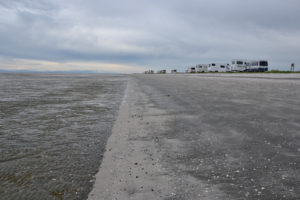
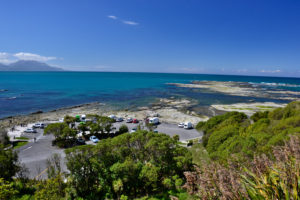
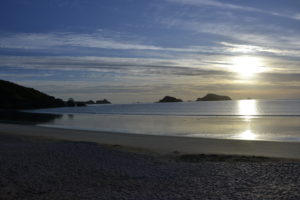
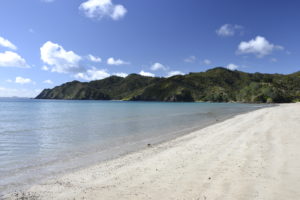
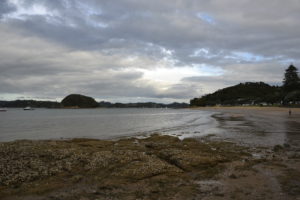

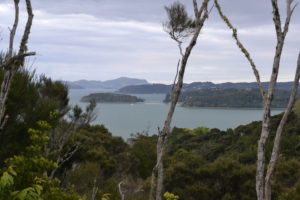
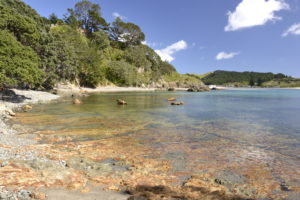

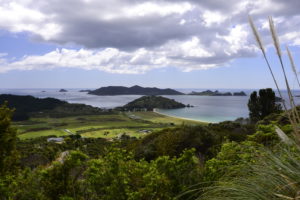

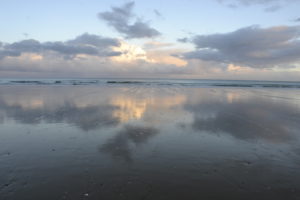
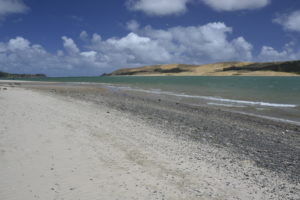
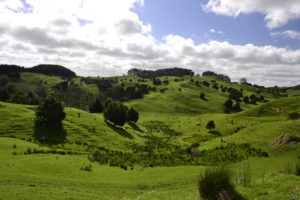
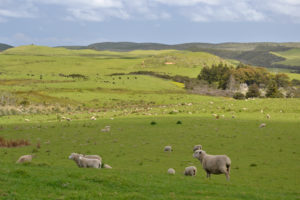
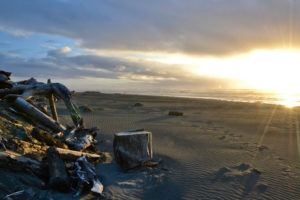
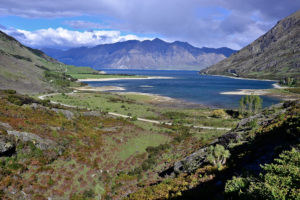
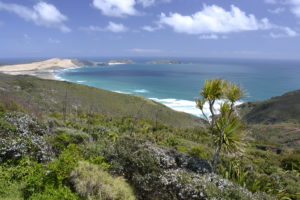
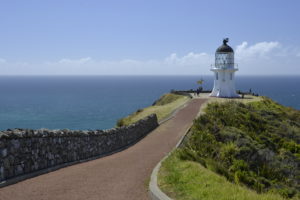
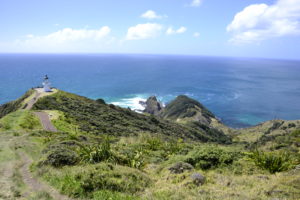

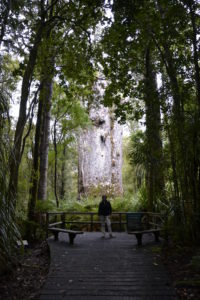
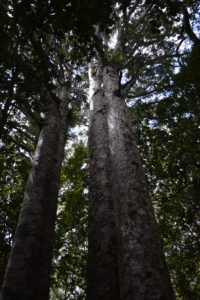
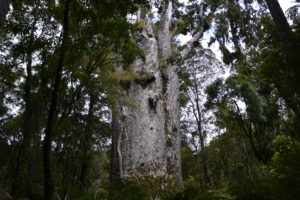


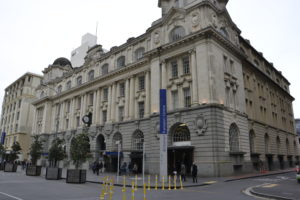


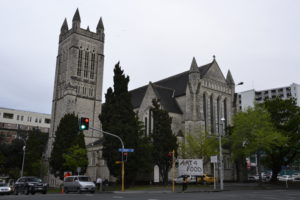

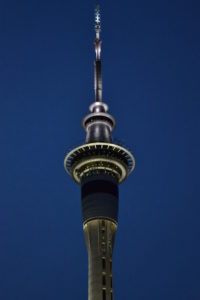
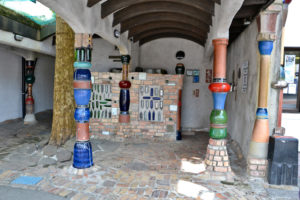

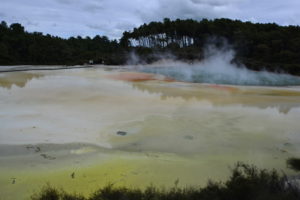


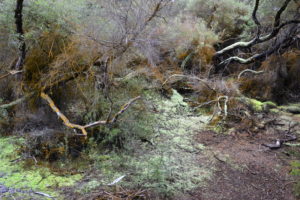
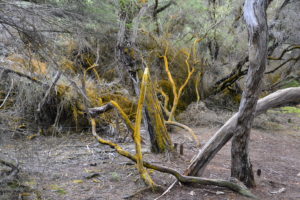
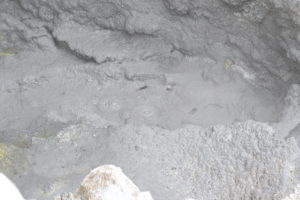



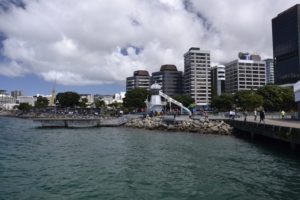

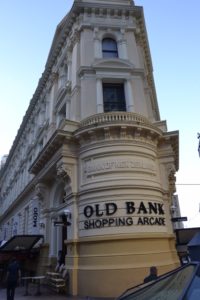


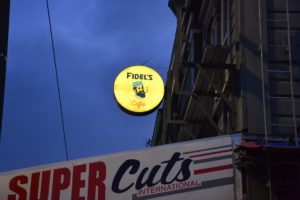

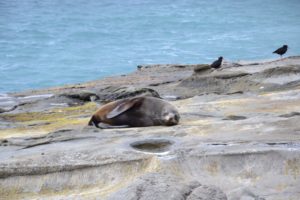
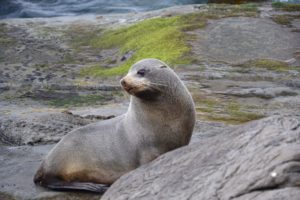


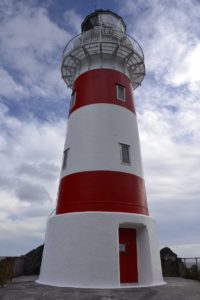

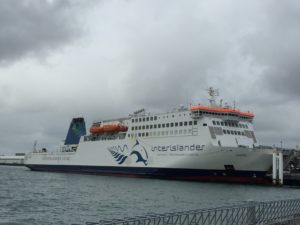


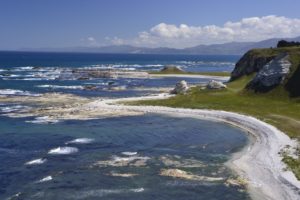
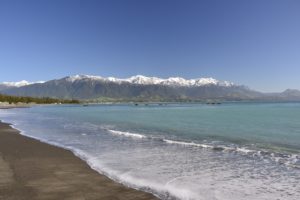
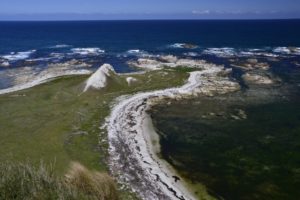

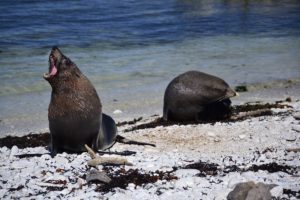

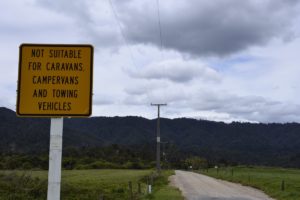

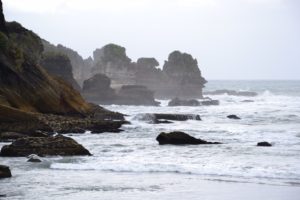
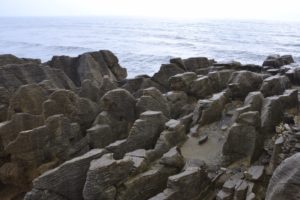
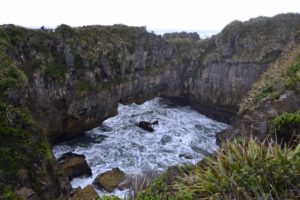
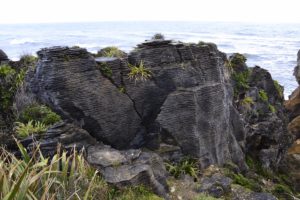
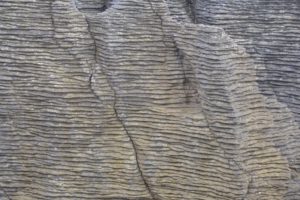
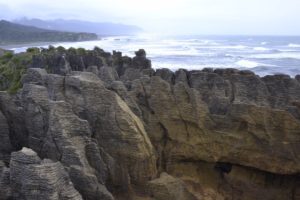
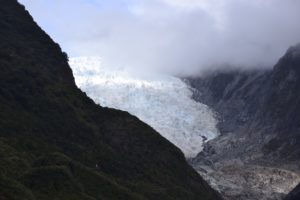
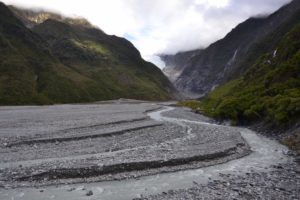
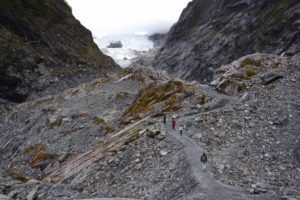

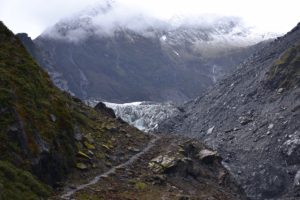
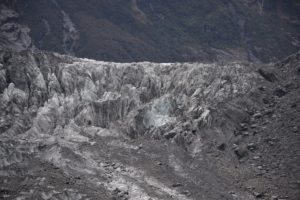

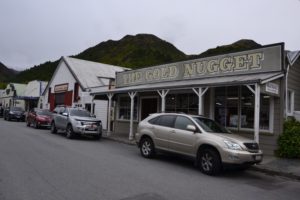
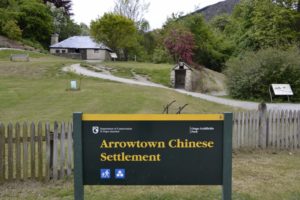
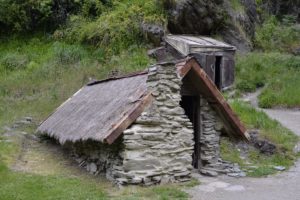

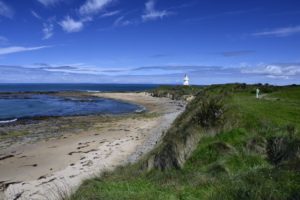
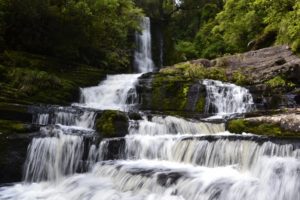
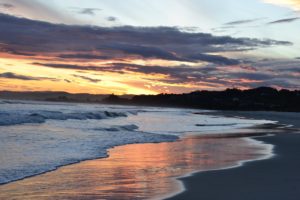
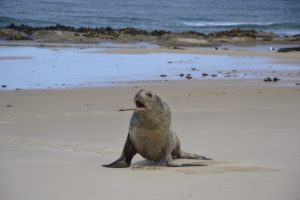
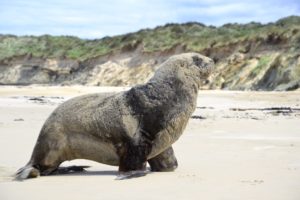
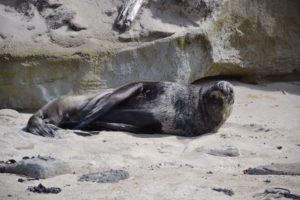

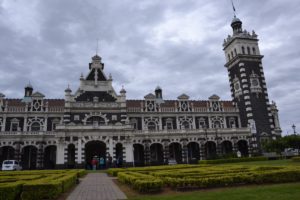
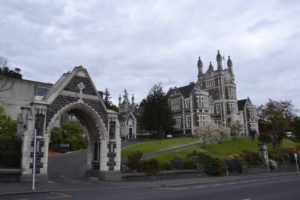

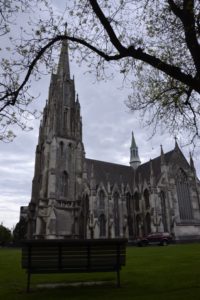

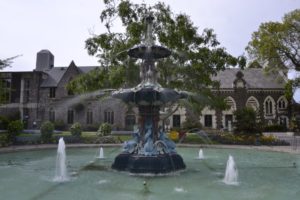

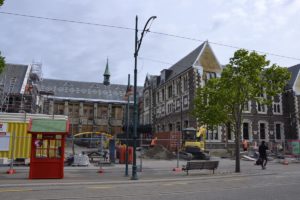

3 thoughts on “New Zealand Travel Tips”